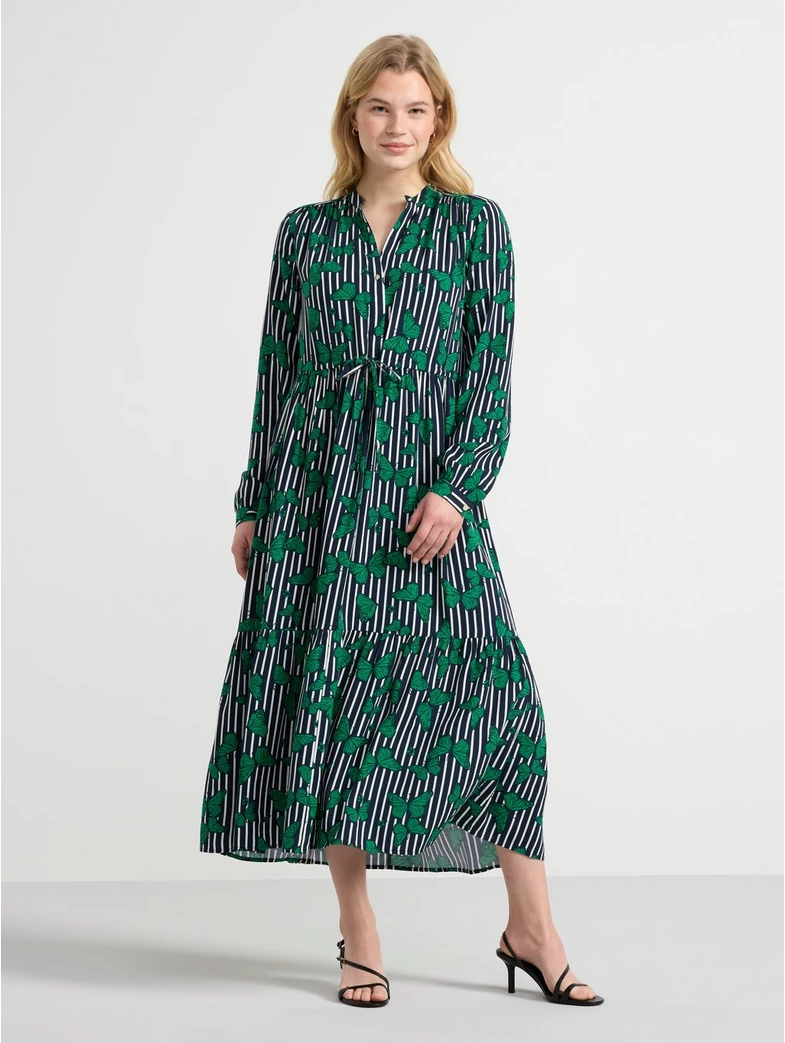
- Oncemore
- Chemical Recycling

These garments from Lindex are based on OnceMore® pulp.
OnceMore® is the world’s first large-scale process for recycling blended fabrics. The process combines post-consumer textile waste with renewable wood from from Södra’s responsibly managed forests to produce high-quality textile pulp. Södra collect used blended textiles from suppliers, separate the cotton through chemical recycling and combine it with renewable wood cellulose to get a material that enable producers to create products that are either recyclable or biodegradable. OnceMore® is produced at Södra’s mill in Mörrum.
Södra, Lindex
Efficient use of resources
Reduction of waste
100 % Viscose (based on OnceMore® pulp)
Lear more about OnceMore® here
Södra is a dissolving pulp producer. The amount of textile waste was the reason they started to investigate the possibility to use it once more. The end-result is closing the loop and reducing waste.
During the King and Queen’s state visit to Berlin in autumn 2016, H.M. Queen Silvia wore a unique scarf made by Smart Textiles through the project Textiles back to Textile. It was the first of its kind and is made from recycled cotton and Swedish forest spun into new fibers and is the forerunner to these garments. The scarf is displayed in Smart Textiles Showroom.









The vast majority of our garments end up in landfills or are incinerated. Much too few are recycled because cotton and viscose can not be recycled with satisfactory quality on a large enough scale. The circularity of textiles stops, because there is a hole in the loop, a crucial part is missing. Until now.
The cotton fiber cannot be recreated to its original fiber structure through chemical recycling. But it can still be recycled through dissolving and releasing the cellulosic molecules. Chemical recycling technology dissolves used cotton and other natural fibers into a new raw material, such as Circulose pulp. This pulp can then be turned into textile fiber, be fed into the textile production cycle and meet industry specifications. The way fashion is produced and consumed can finally be transformed into a never-ending loop.
Could this be the key to recycling textiles on a massive scale and make fashion strive toward sustainability?
All group objects:
The current use of textile products is very unsustainable. We tend to buy many more products than we need and we throw away most of our textiles with the household waste, long before they are worn out.
The main challenges regarding resource efficient waste management includes improving collection rates, automated and material specific sorting technologies, and the scaling up of recycling technologies.
Intense research and industry innovation is focusing on the technology development needed, while policy and other financial instruments are developed at the national and EU levels. The need of the industry to secure recycled feedstock, in combination with upcoming EPR (Extended
Producer Responsibility) policies, will lead to new possibilities for the improved recycling of textiles.